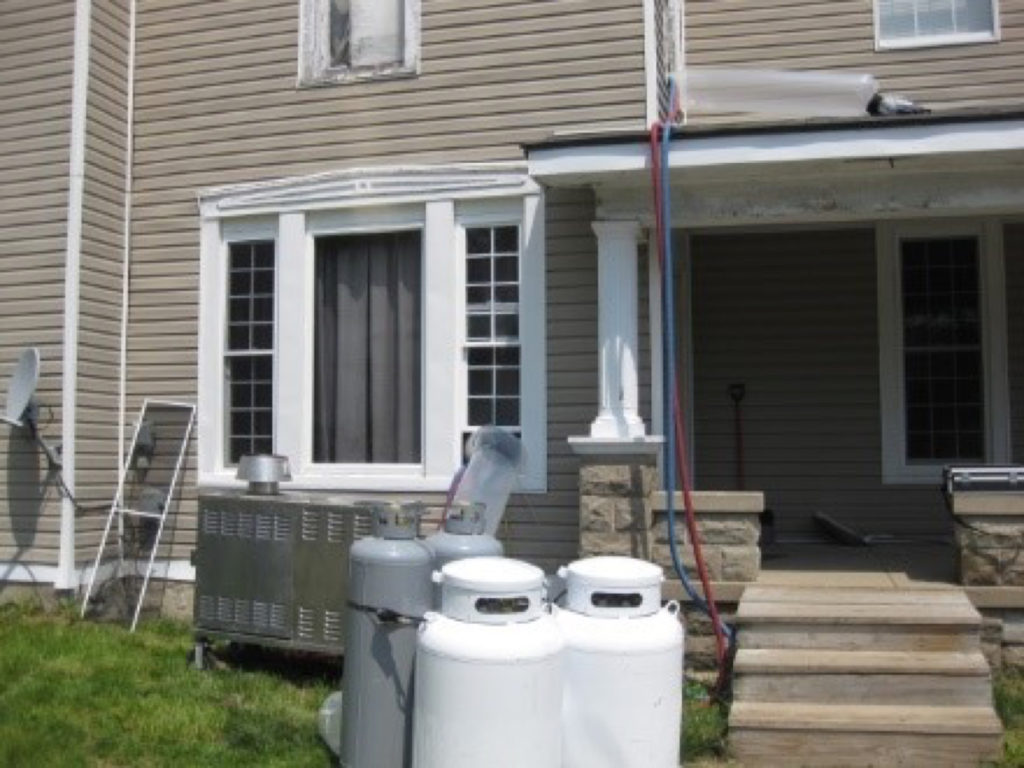Essential Equipment for Effective Water Damage Restoration
Water damage Equipment is a necessity to help home and business owners who’s properties have been affected with water damage. In order to properly dry a home or business that has been affected by water damage there are 4 things a water damage restoration contractor needs in order to be successful.
These four items are extraction, dehumidification, air movement, and heat. Below are the pieces of equipment we use in order to properly dry out structures that have been affected by water damage.
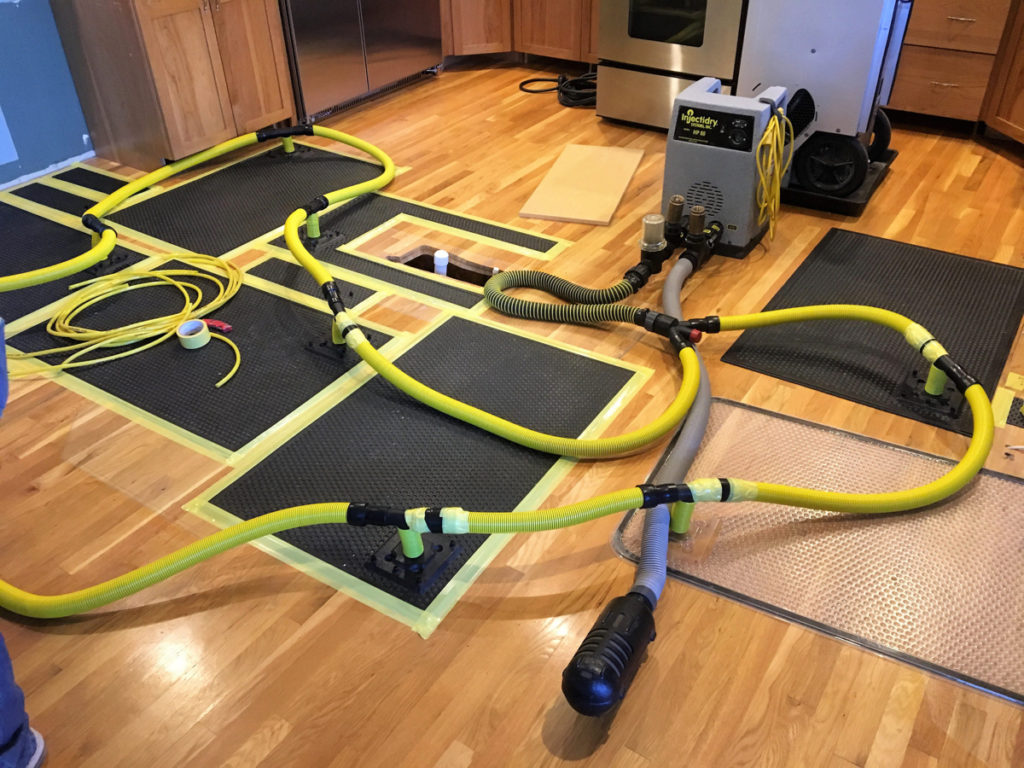
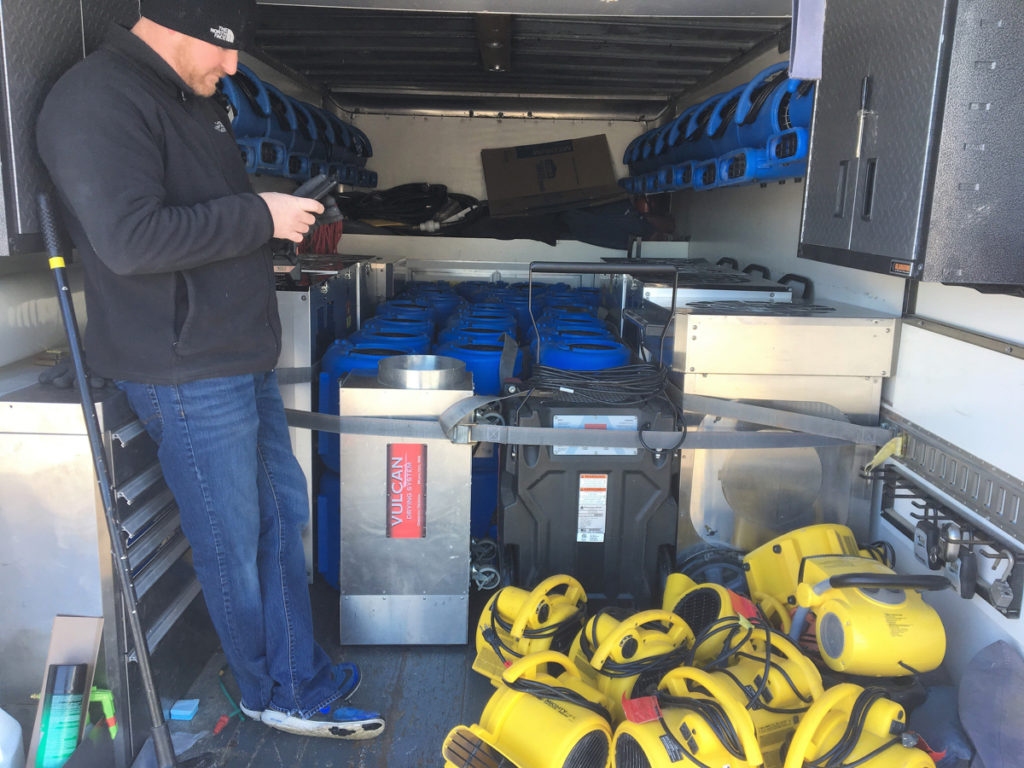
Extraction
Water Extraction Equipment
We use the Hydro-X Extreme Extractor and Hydro-X VAC PAC as our main water extraction or water removal piece of equipment. It has two large vacuum motors that run on 120 Volt power and provides the most suction possible due its innovative wheel design. This extractor has the ability pull water through carpet and pad allowing us to dry carpet pad and carpet in place after a sump pump failure has caused a flooded basement.
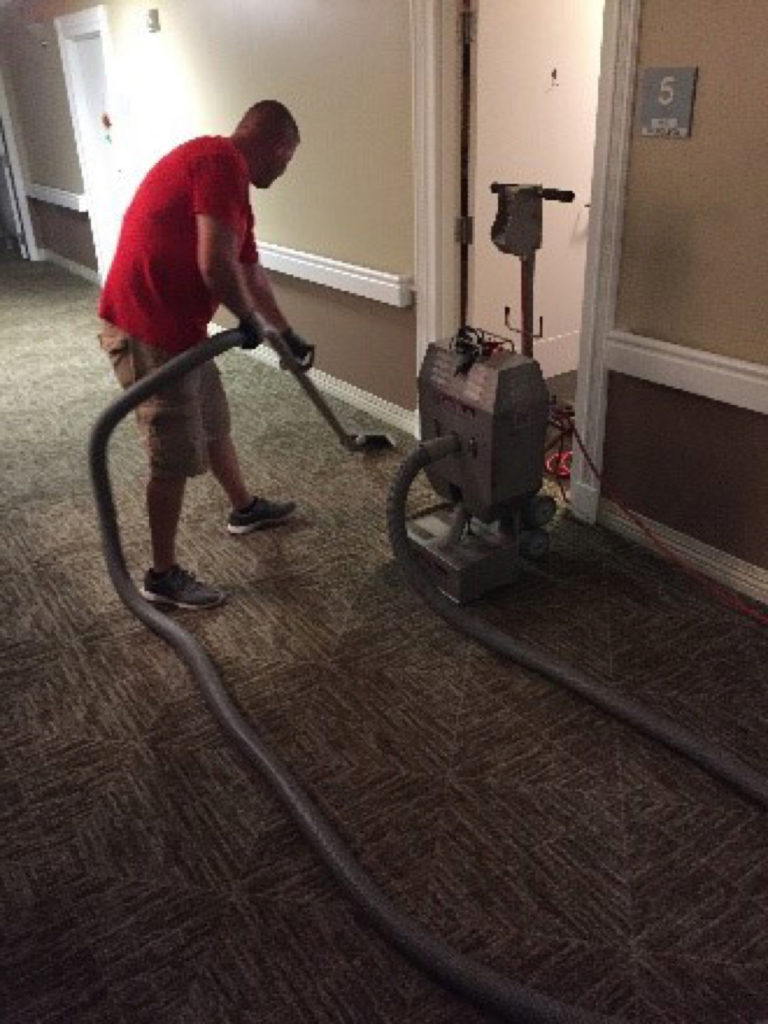
The Hydro X Vac Pac is being used to extract water out of a commercial glue down carpet in a hallway
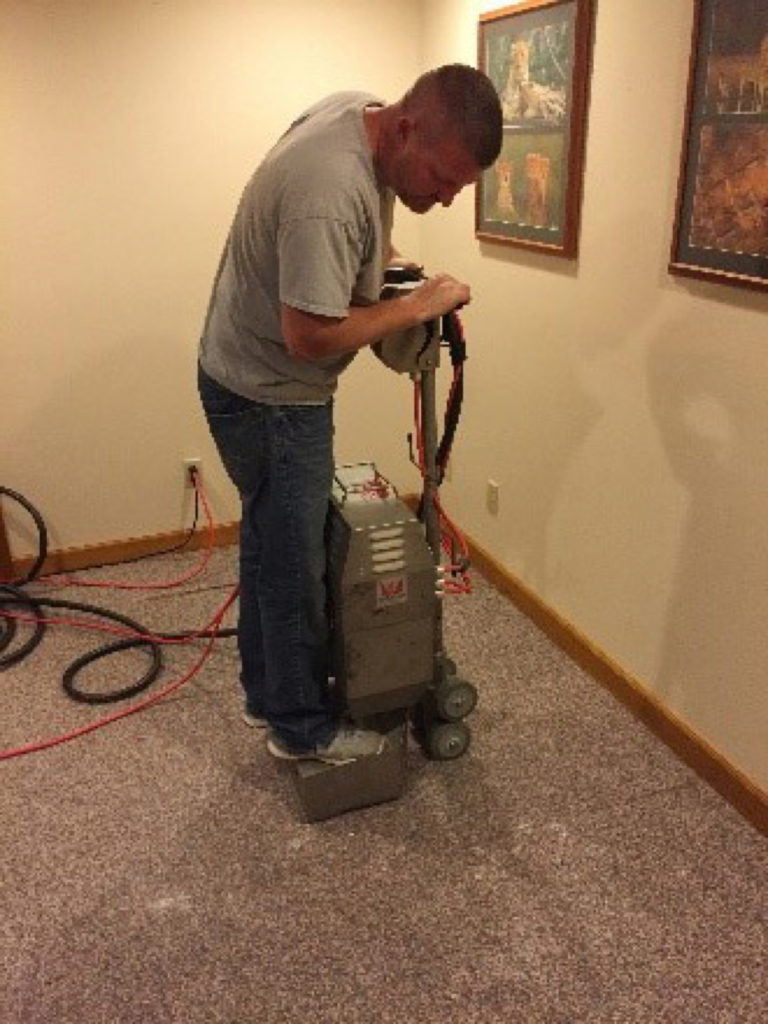
The Hydro X Extreme Extractor and VAC PAC are being used to extract water out of a basement after a sump pump failure
Dehumidification
Low Grain Refrigerant (LGR) Dehumidifiers
We use Low Grain Refrigerant (LGR) Dehumidifiers to dry homes and businesses that have been affected by water damage. These units are specifically designed to lower the relative humidity below the levels of conventional dehumidifiers that most homeowners keep in their basements or garages. Read about the difference between a conventional dehumidifier and a low grain refrigerant dehumidifier.
These units have the ability to pull up to 170 pints per day out of a wet structure that has been heavily affected by water damage. We use a couple different sizes of LGR dehumidifiers in order to meet the customer’s needs. It isn’t always necessary to use the biggest dehumidifier if the situation is only minor, therefore a smaller unit will do the job.
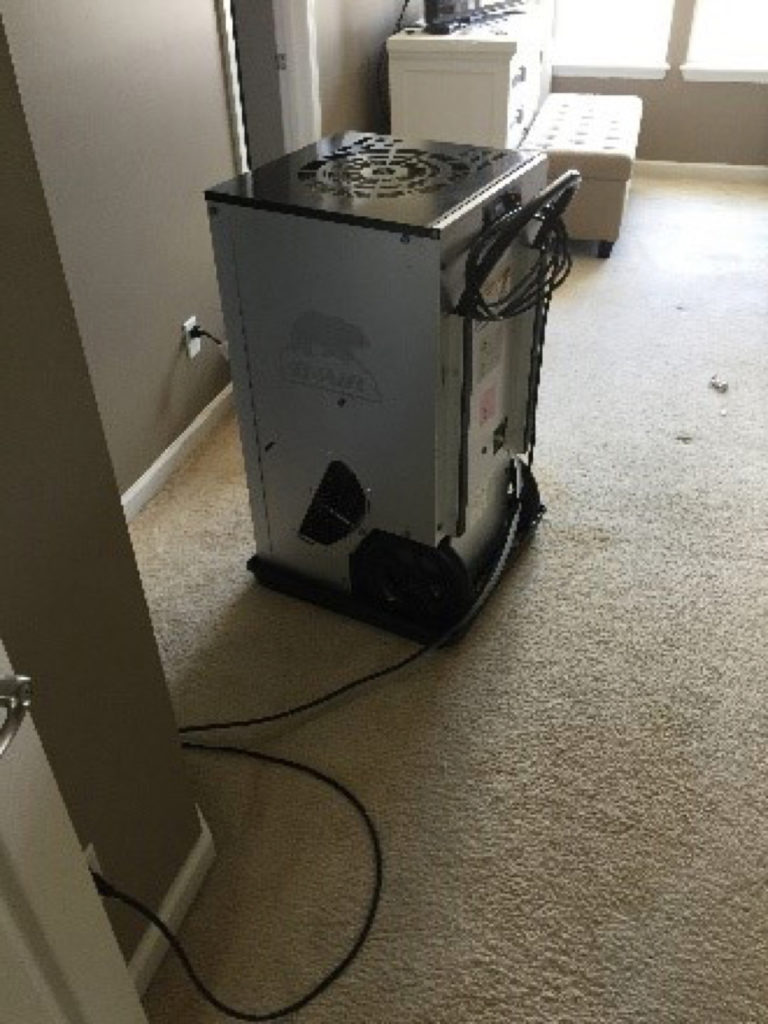
This unit is the biggest LGR Dehumidifier on the market. We utilize these units when the structure has become very saturated after being affected by water damage
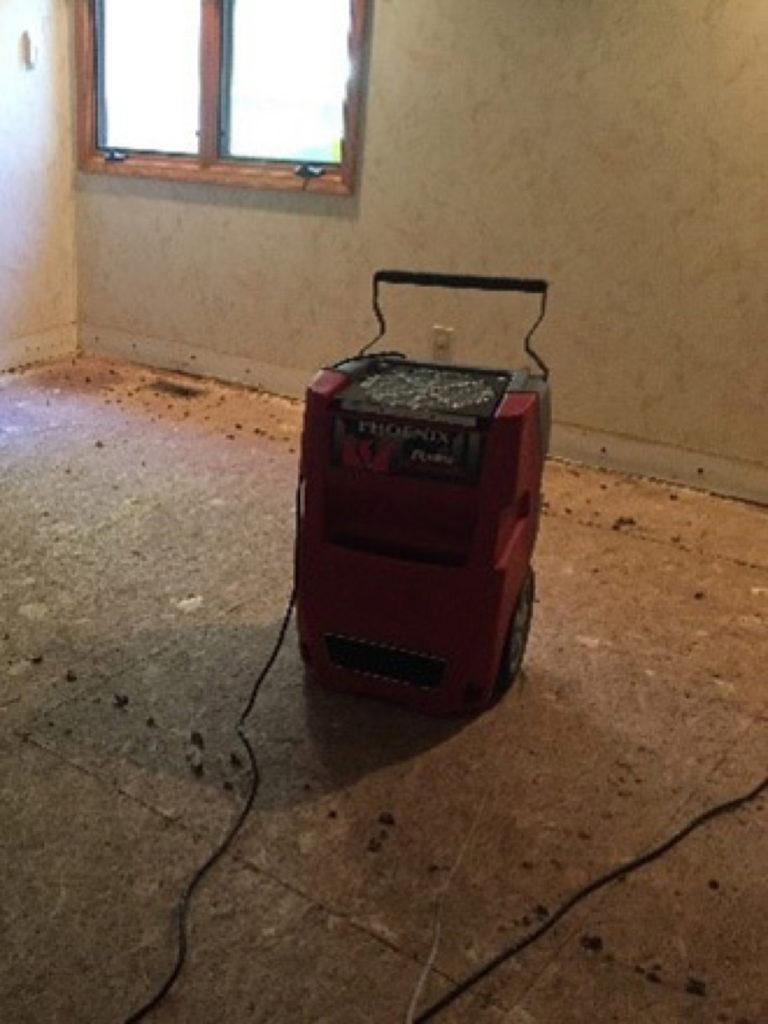
This is a smaller LGR Dehumidifier we use when it isn’t necessary to use a Larger Units. It still provides low relative humidity air but it just doesn’t process as much air as the other units.
Desiccant Dehumidifiers
We use LGR Dehumidifiers for residential water damage but when there are large commercial properties affected by water damage we utilize our trailer mounted desiccant to provide the low humidity air that is necessary to achieve the conditions to dry structural materials from water damage.
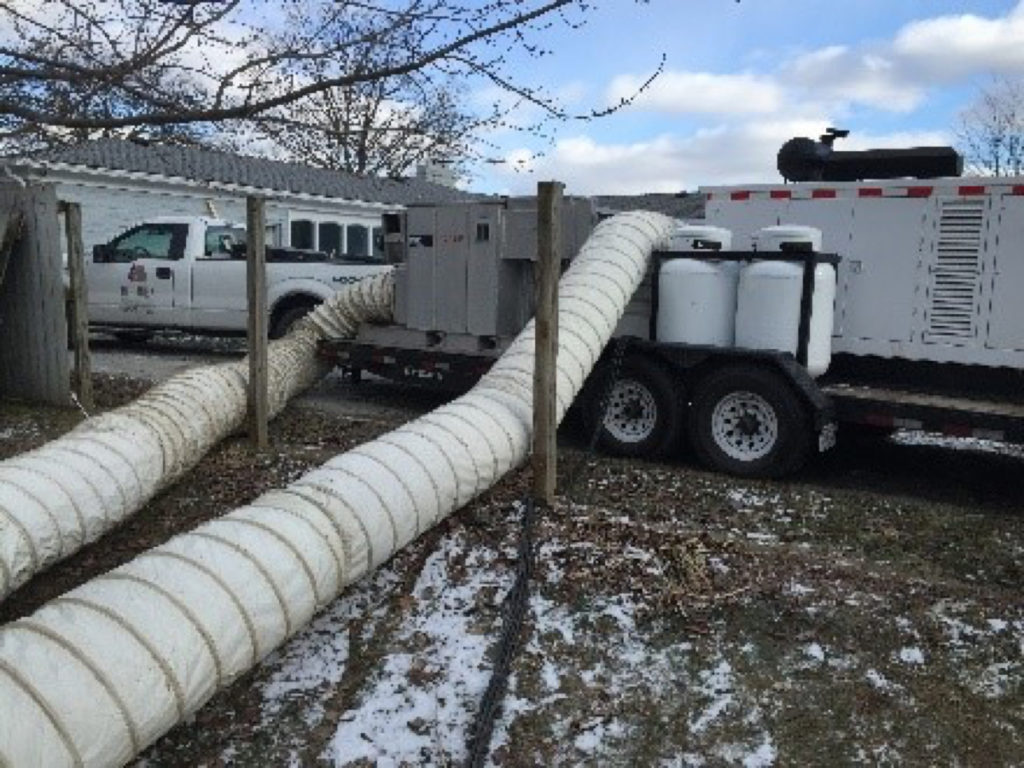
Our Trailer Mounted Desiccant was used to dry out an assisted living facility after they had water damage from a frozen sprinkler line
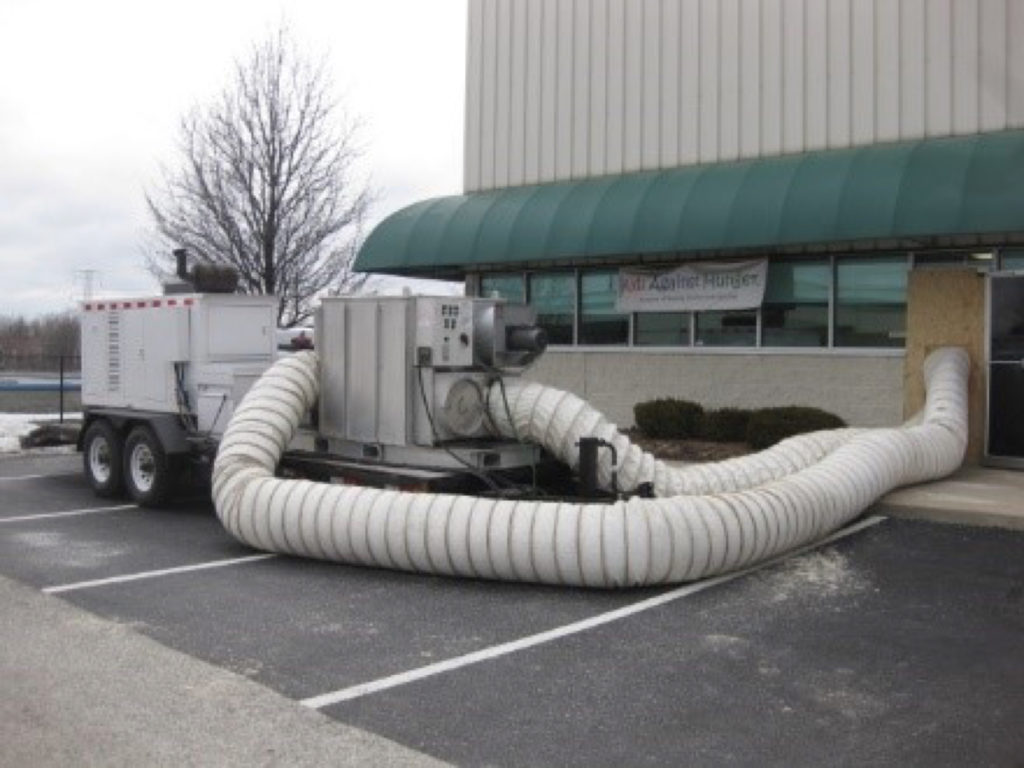
The desiccant was used here to dry a non-for profit’s office space after a frozen pipe caused severe water damage
Air Movement
Air Movers (Fans)
A necessary part of every water mitigation or dry out is air movement. We utilize a few different kinds of air movers that help us achieve air movement in order to dry out wet structures. The first type of air mover is the centrifugal air mover also known as a snout nose fan because of its shape. Learn more specifics about air movers.
These are ideal for focusing the air movement directly at the floor level as well as at the walls that have become wet due to water damage. Another type of air mover we use is known as an axial air mover. These are larger fans that move more air but does not focus the air as well as a centrifugal air mover.
We also utilize high-static pressure air movers that help push air through hard to reach places. These are ideal when drying insulated walls or ceilings in place rather than removing them.
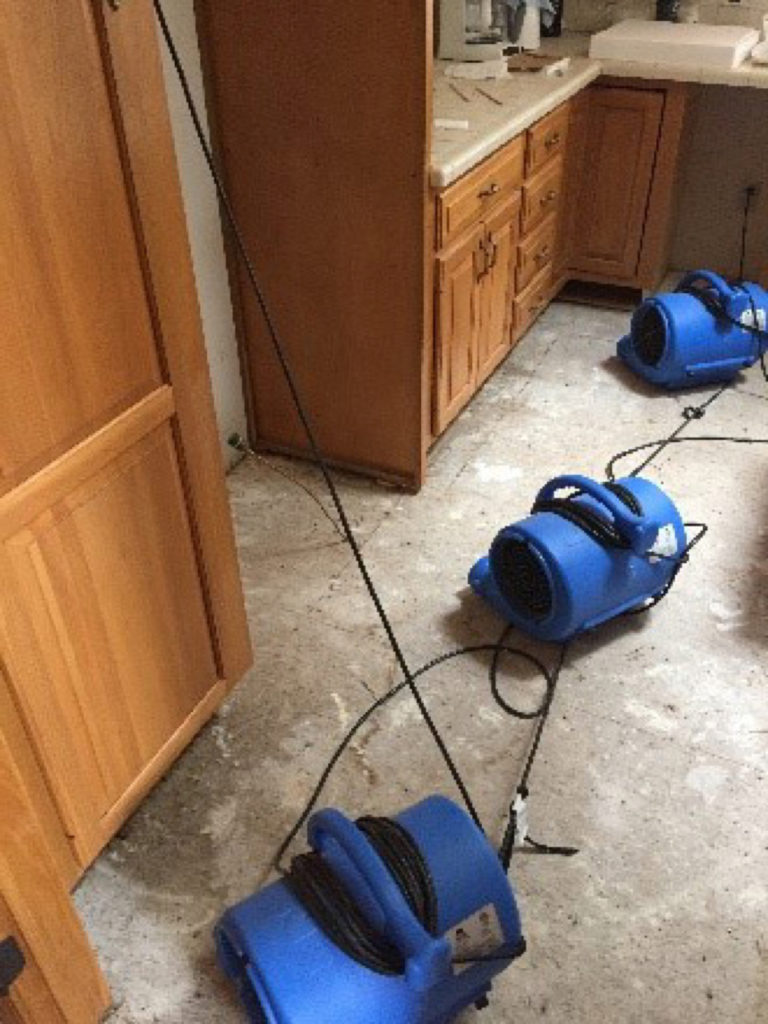
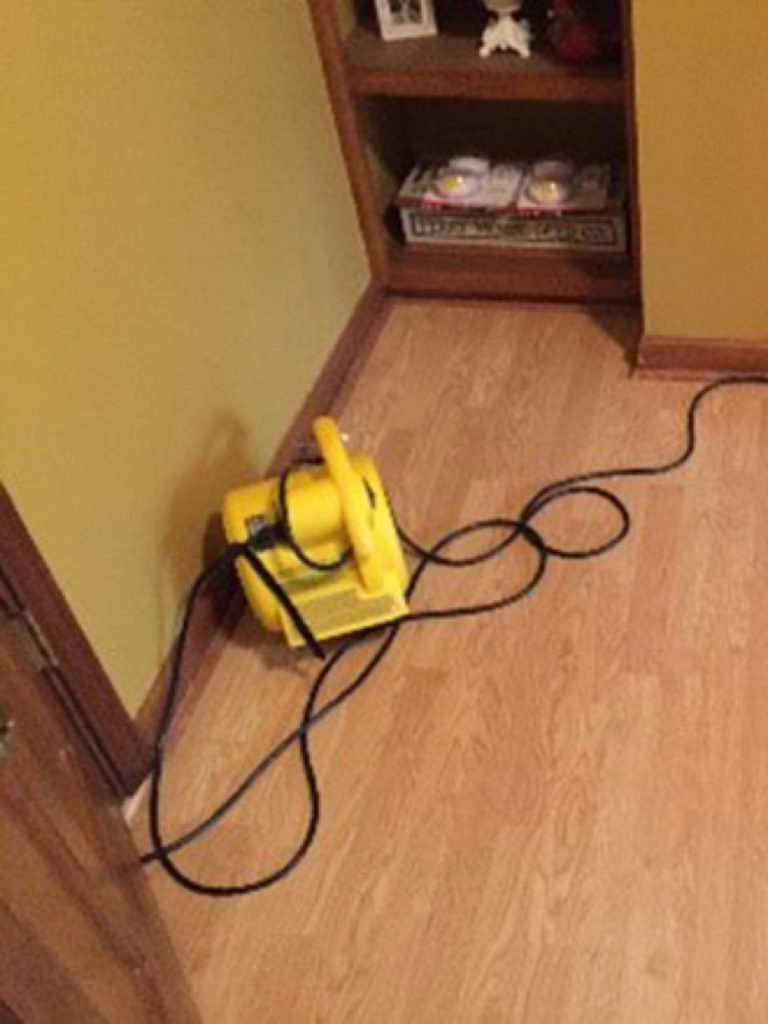
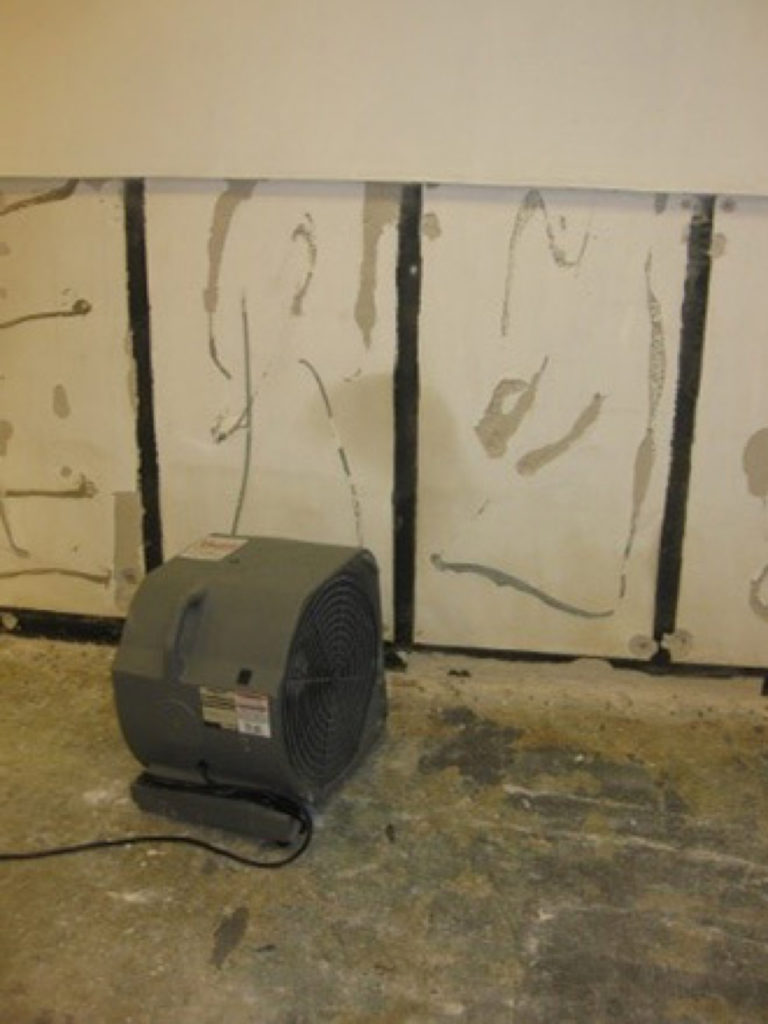
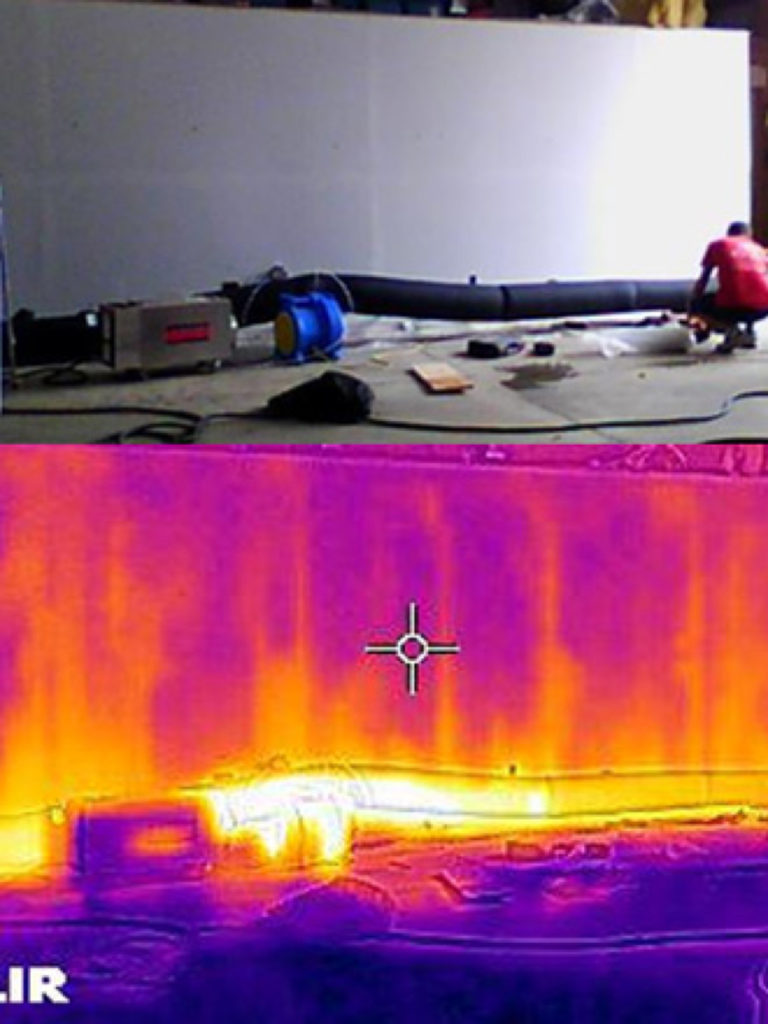
Wall Cavity Drying Systems
We use wall cavity drying systems to dry walls and ceilings in place. Just because a wall or ceiling has been affected by water damage doesn’t mean that it needs to be removed or demolished. Read about drying wall cavities.
If we are able to get hot-dry air to all the affected areas, then we are able to dry many structural materials in place. Below are the systems being used to dry interior walls and ceilings affected by water damage.
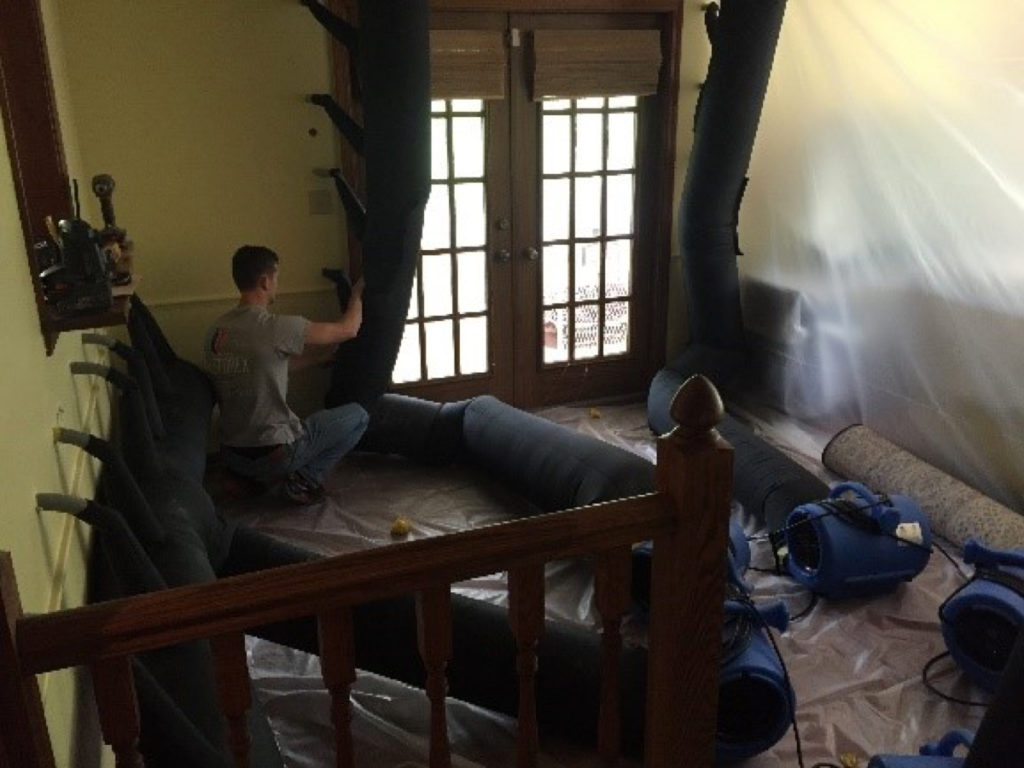
This picture shows multiple wall cavity drying systems being used to dry a living room that was damaged due to a broken toilet supply line from upstairs
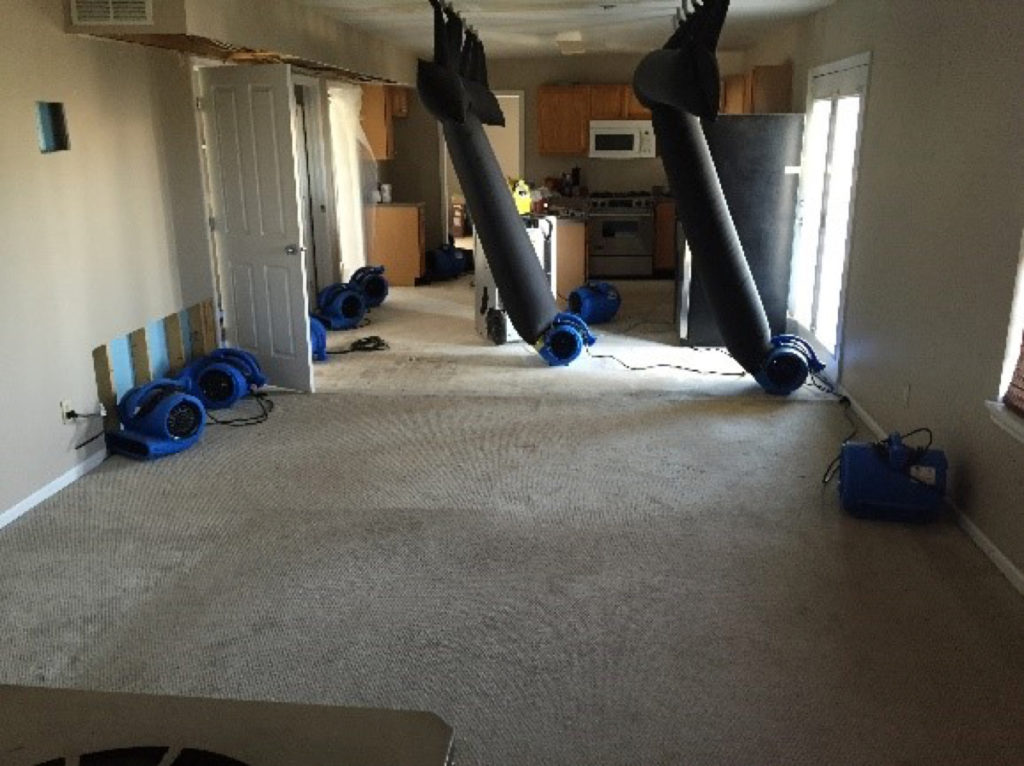
This picture shows 2 systems being used to dry the ceiling that was affected by water
Heat
Using heat is a necessary part of any water damage drying project. We utilize several different types of units to supply supplemental heat to spaces in order to dry out materials that have been affected by water. The three main types we use are electric, indirect-fired, and hydronic boiler. All of these units are specifically designed to assist us in any type of water damage situation.
Electric Heat
We use two different types of electric heat, 120 Volt and 220 Volt. The 120 Volt heaters can be used in most standard outlets in a residential and commercial setting. We use small 1500 Watt heaters when we only need a small amount heat and 3000 Watt heaters when we need to heat a larger area.
We use a 220 Volt heater when there is limited power available to use 120 Volt or if we need more heat than a 3000 Watt heater can provide. In order to utilize the 220 Volt heater, we typically have to use an Electric Oven or Dryer outlet.
In the scenarios where these are not convenient or available we have a licensed electrician wire the unit directly to your electric panel.
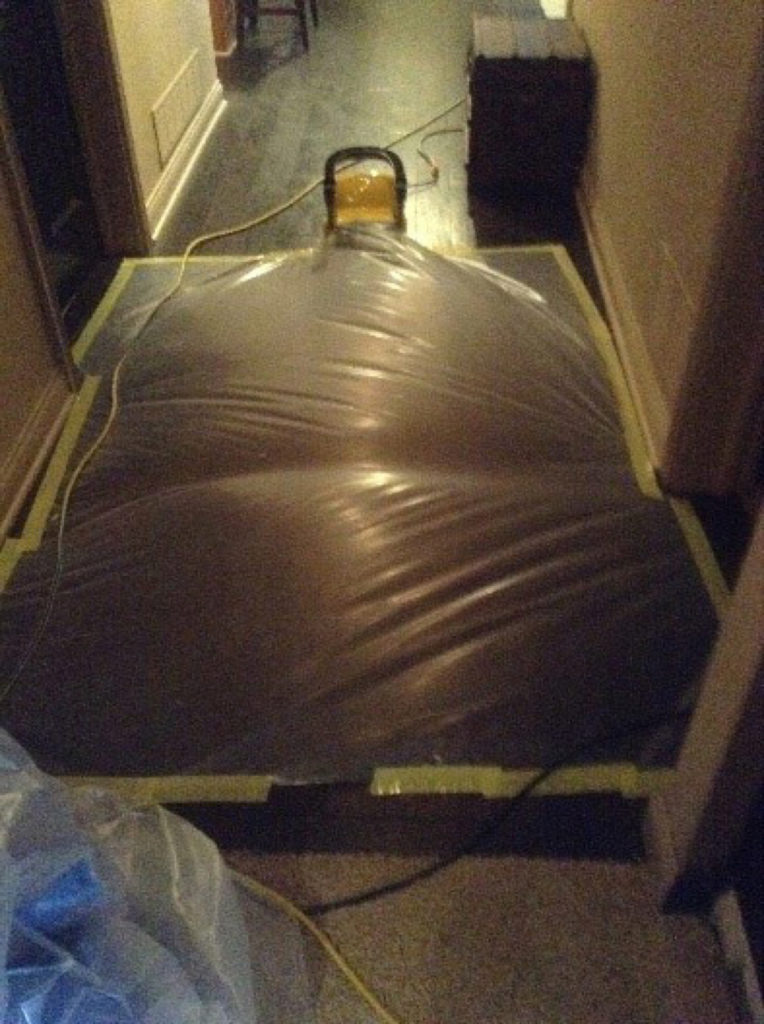
This picture shows a 1500 Watt heater dry a small section of engineered hardwood floor affected by water damage
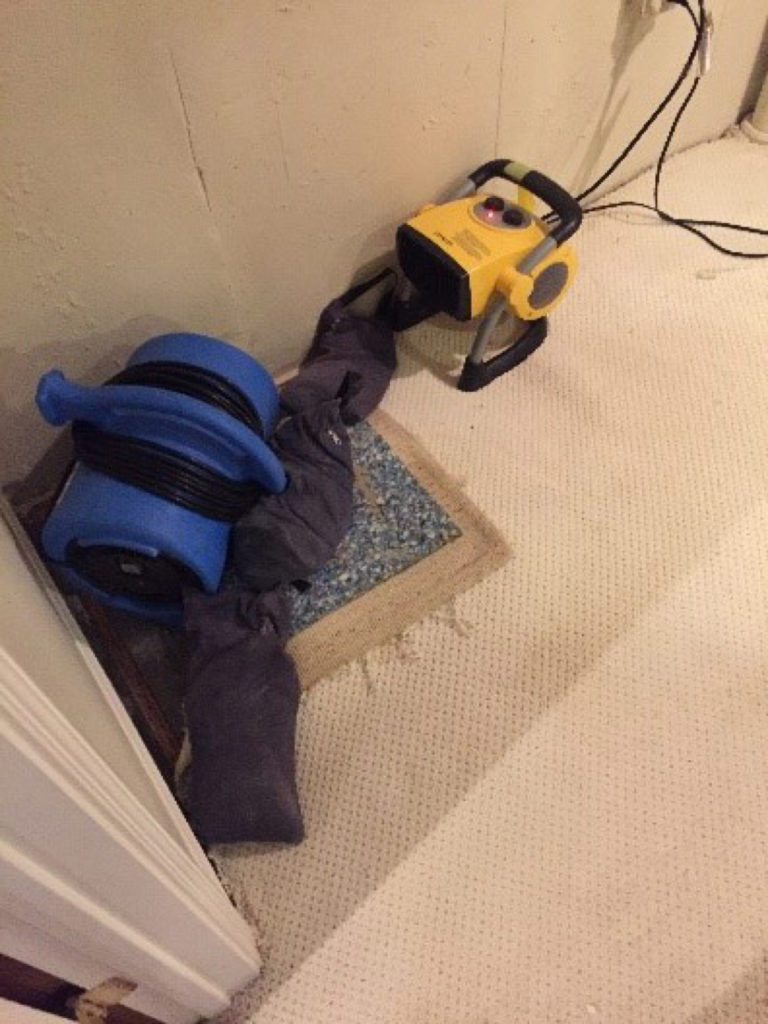
This picture shows a 1500 Watt heat adding supplemental heat in order to dry wet carpet and pad affected by a flooded basement
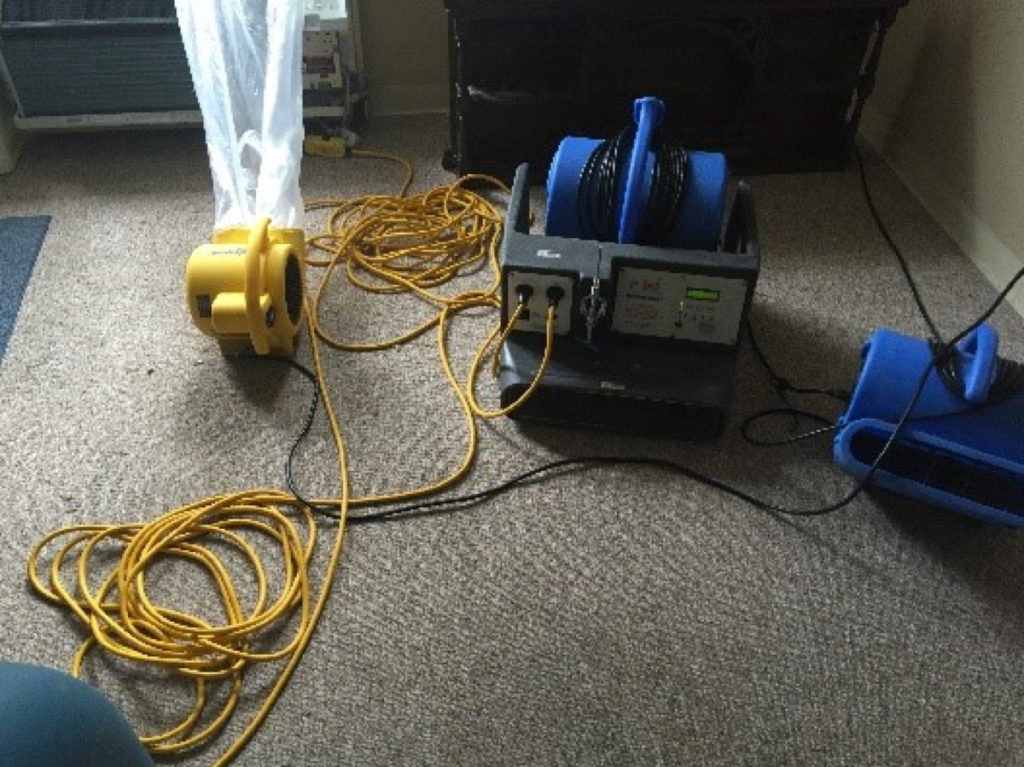
This picture shows a 3000 Watt heater adding supplementary heat in an assisted living facility affected from water damage
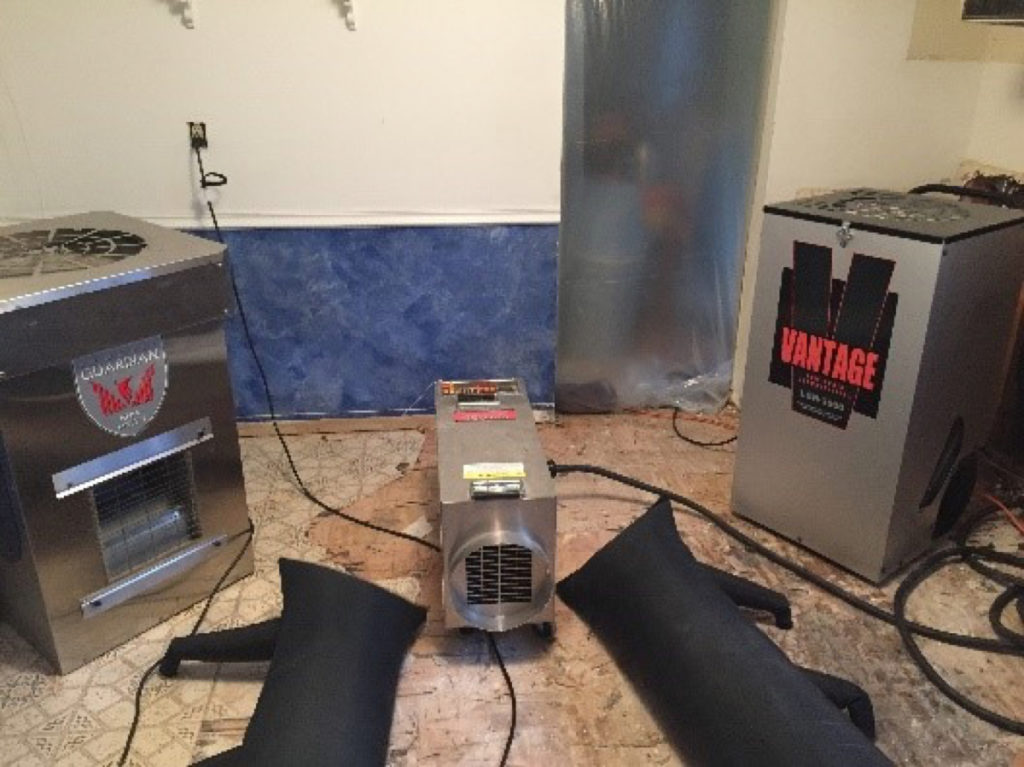
This picture shows the 220 Volt heater supply supplemental heat to a kitchen subfloor and an assisted living facility
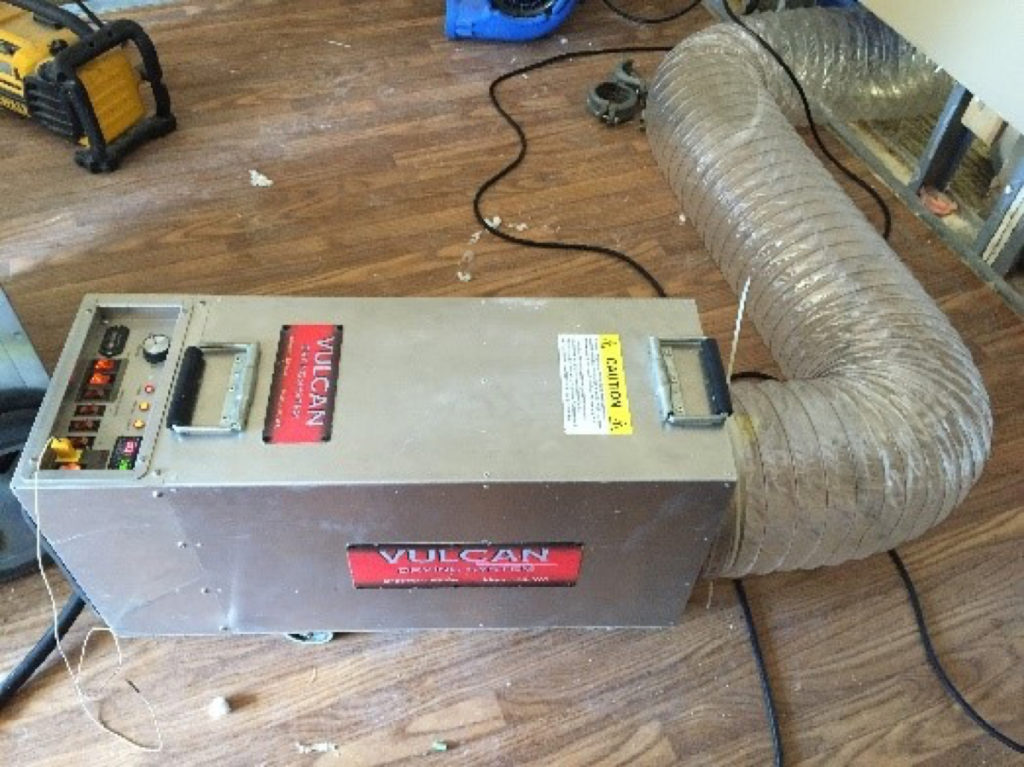
This picture shows the 220 Volt heater supply supplemental heat to a kitchen subfloor and an assisted living facility
Indirect-Fired Furnace
We utilize indirect-fired furnaces a lot to supply heat to water damage projects. These units are larger than the electric heaters and are placed outside a structure in order to dry affected materials. The heat is created by using diesel fuel in order to create hot air and then it is ducted into the structure through a window or door. We also use these units for drying crawlspaces and wet subfloors over crawlspaces.
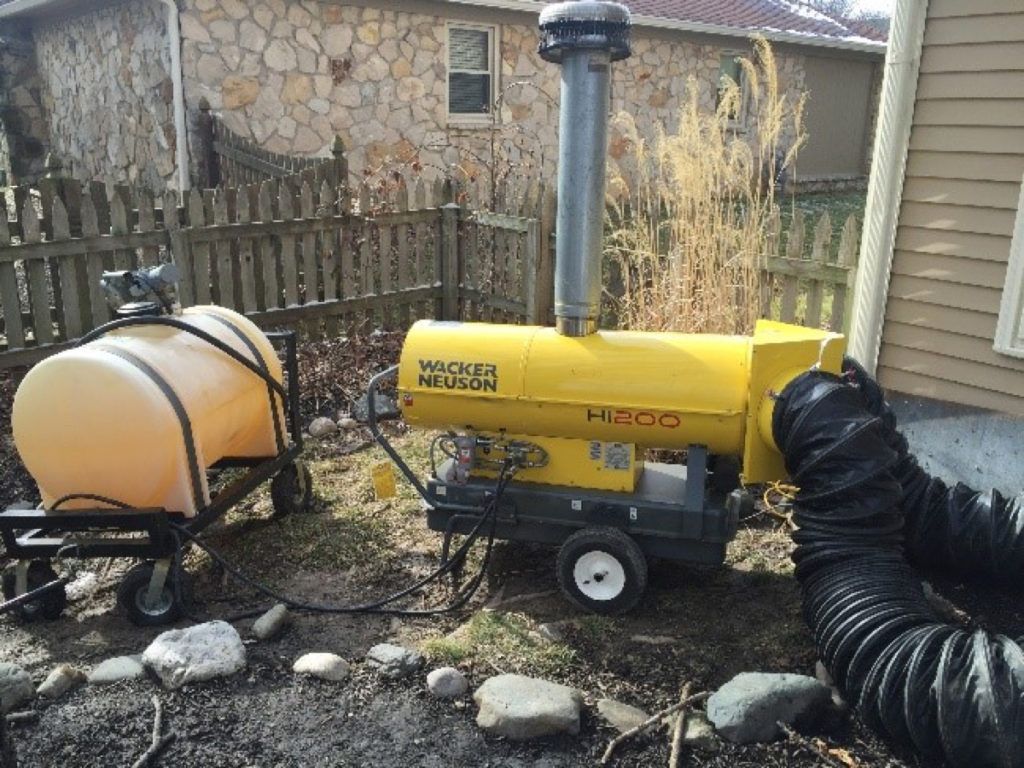
This picture shows a 200,000 BTU indirect-fired furnace drying a crawlspace that was affected by a busted hose outlet
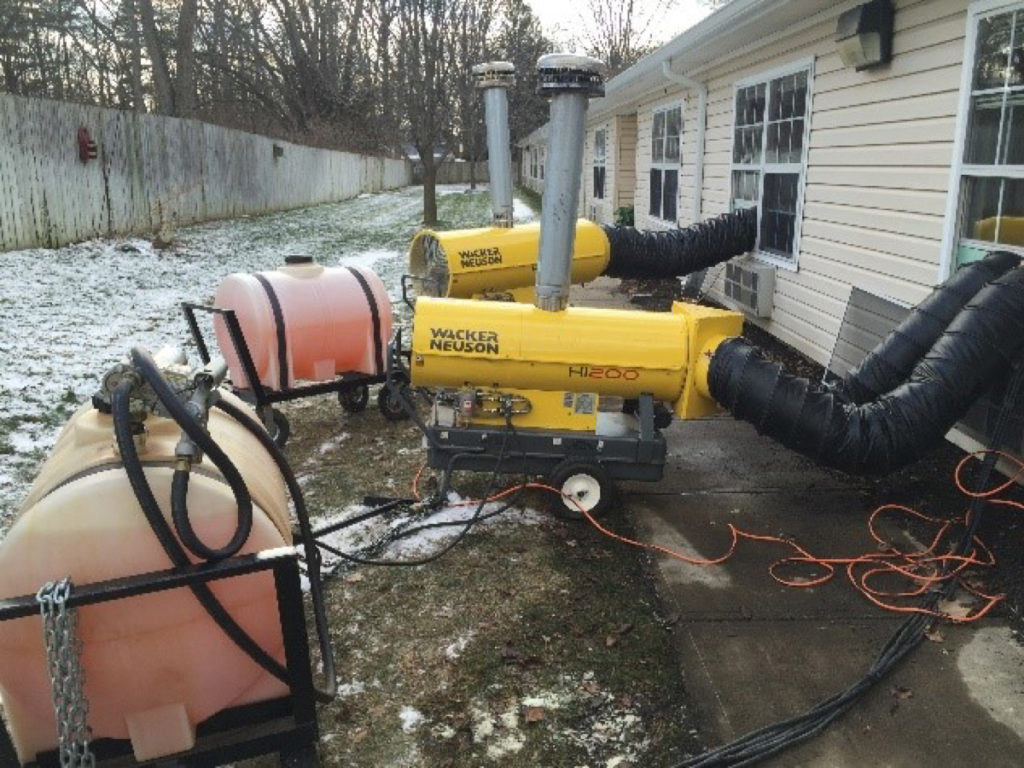
This picture shows a 300,000 BTU and 200,000 BTU indirect-fired furnace supply heat to a wet structure during the winter in order to dry water damage caused by a frozen sprinkler line
Hydronic Boiler (TES)
We utilize a hydronic boiler system during water damage that needs supplemental heat in several different places. This unit is very good for large residential or commercial water damage. There is a boiler that is set outside the structure and it utilizes LP to heat a glycol fluid that is pumped to individual heat exchangers. This unit allows us to focus heat in several different areas of an affected structure.
